Seven Films by Ed Emshwiller
When and Where
Description
AD HOC #55: Seven Films by Ed Emshwiller
Free admission
Ed Emshwiller began his career as an illustrator of science-fiction books and magazines. In this field his covers were distinct for their realist figuration and bright colours. Emshwiller had studied painting in France under the G.I. Bill, and on returning to America became involved in abstract expressionism. His work in commercial illustration maintained his training in conventional realism, placing vivid, photo-realistic figures into fantastical realms and situations, even as he was otherwise drawn to the possibilities for form to transcend subject.
By the mid-1950s, Emshwiller had begun to make 16mm films that combined his interest in abstraction and the figure. Emshwiller’s filmmaking would cover a wide range of subjects, from pure abstraction to dance, as well as a wide range of formal approaches, from his dramatic use of wide-angle lenses and pixilation, to his later groundbreaking work in video synthesis and computer-generated imagery. His earliest films, such as Dance Chromatic, Transformation, and Lifelines, integrated the figure with animated abstract painting. Beginning with Thanatopsis in 1962, Emshwiller’s films would tune these interests increasingly towards the relationship of the body to space. This theme is made explicit in the twitching, sped-up movements of the figure in Thanatopsis, and in films such as Carol, a portrait of the filmmaker’s wife, in which she passes through a forest, slowly in a series of staggering, interlocking fades, her body becoming multiple and transparent, eventually merging with textures and patterns found in nature. The body in space is also at play in George Dumpson’s Place, in which the camera becomes a distorting witness to title space, the home of a fellow veteran whose hoard of junk has become a collage of American life, an example of Emshwiller’s ability to develop claustrophobic wide-angle images that suggest in-utero vision. This relation between perception, the body and space is most directly illustrated in Emshwiller’s dance films, in which the camera becomes a participant in modern dances, the body divided and reconstituted by Emshwiller’s composition and editing.
All films projected on 16mm film.
Program:
Transformation (1959, 3 mins.)
Dance Chromatic (1959, 7 mins.)
Variable Studies (1960, 5 mins.)
Thanatopsis (1962, 5 mins.)
Totem (1963, 16 mins.)
George Dumpson’s Place (1965, 8 mins.)
Carol (1970, 6 mins.)
TRT: ~50 mins.
AD HOC aims to rethink what an experience of cinema can be. We seek to reposition historical landmarks and buried treasures within the on-going tradition of experimental and other non- commercial modes of filmmaking, drawing on work from Toronto, throughout Canada, and internationally. Within these parameters, we aspire to diversity in programming, as well as to multimedia and interdisciplinary screening events that bring together varied communities.
AD HOC = Stephen Broomer, Madi Piller, Jim Shedden, Tess Takahashi, Bart Testa.
AD HOC is made possible thanks to the sponsorship of Innis College and the Cinema Studies Institute at the University of Toronto. AD HOC would like to thank James Cahill, Denise Ing, Charlie Keil, and the staff of Innis College and the Cinema Studies Institute.


